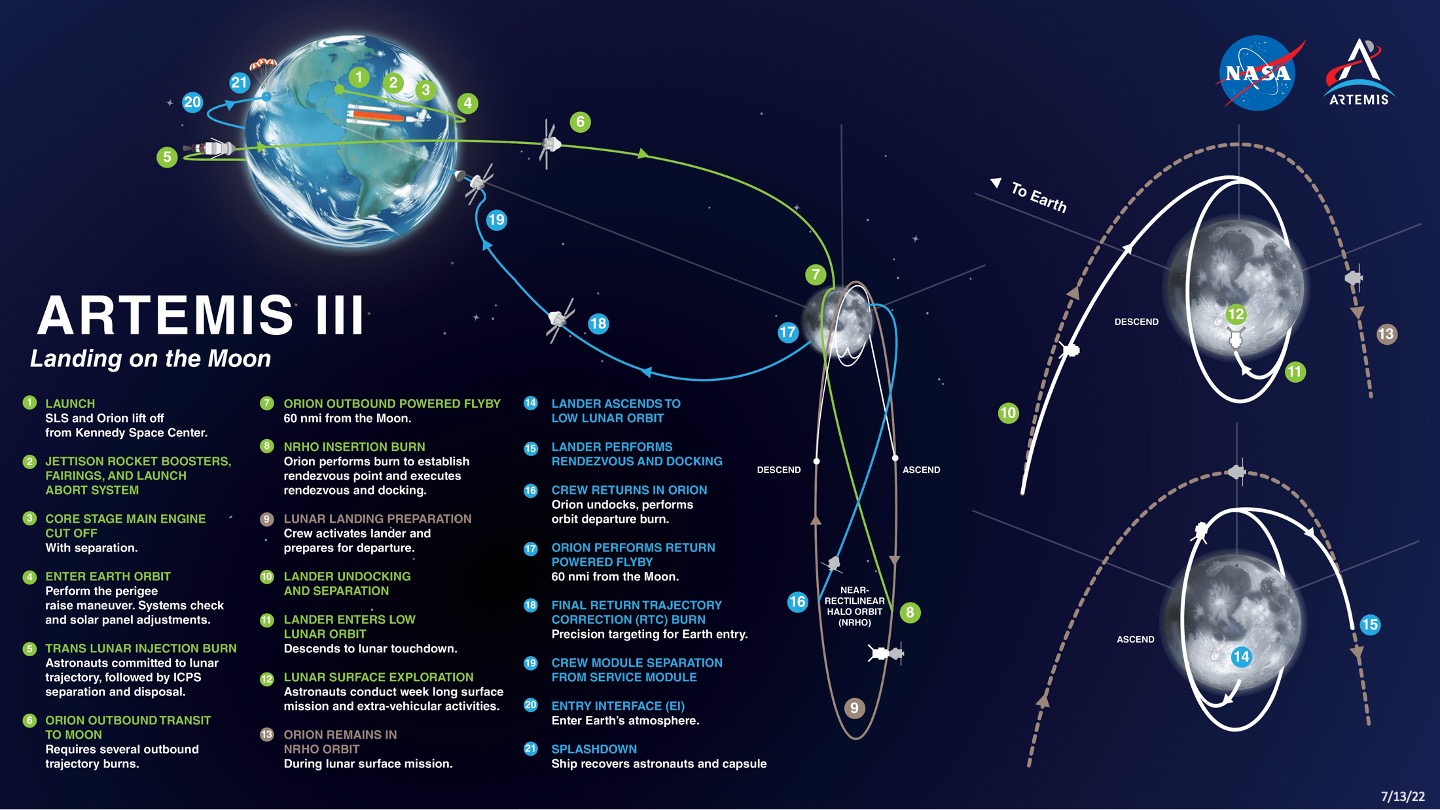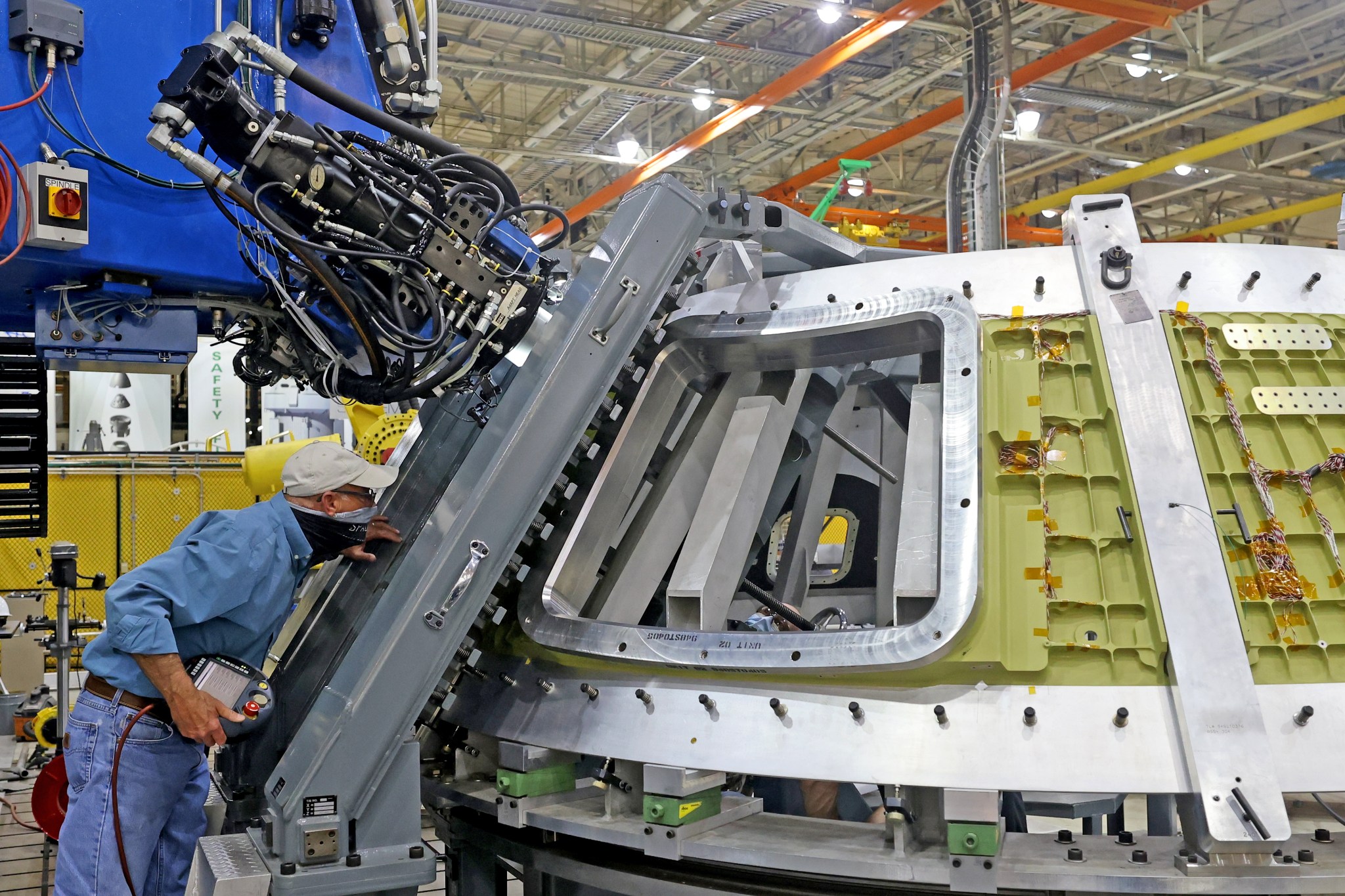Artemis III

Artemis III will be the culmination of rigorous testing and more than two million miles accumulated in space on NASA’s deep space transportation systems during Artemis I and II.
On this mission, Orion and its crew will travel to the Moon, this time docking directly with a Human Landing System (HLS) in lunar orbit, which will take the astronauts to the Moon’s surface.
The agency’s powerful Space Launch System rocket will launch four astronauts aboard the Orion spacecraft for their multi-day journey to lunar orbit. There, two crew members will transfer to the HLS for the final leg of their journey to the surface of the Moon.
NASA intends to implement a competitive procurement for sustainable crewed lunar surface transportation services that will provide human access to the lunar surface using the Gateway on a regularly recurring basis beyond the initial crewed demonstration mission.
The exact landing site for Artemis III astronauts depends on several factors, including the specific science objectives and the launch date. High-resolution data received from NASA’s Lunar Reconnaissance Orbiter has provided incredible views and detailed mapping of the lunar surface, including changes in lighting throughout the year. The agency is working with the global science community to study different regions that provide key desired traits: access to significant sunlight, which provides minimal temperature variations and potentially the only power source; continuous line-of-sight to Earth for mission support communications; mild grading and surface debris for safe landing and walking or roving mobility; and close proximity to permanently shadowed regions, some of which are believed to contain resources such as water ice.
In addition to two crew, the HLS will carry up to 220 pounds of science tools and equipment to the surface, with the goal of returning up to 87.5 pounds of samples. Also, our Commercial Lunar Payload Services (CLPS) providers may be used to deliver pre-emplaced science instruments and equipment for use by our first human return crew while exploring on the lunar surface.
After approximately a week exploring and completing this historic expedition on the lunar surface, the crew will board the lander for their short trip back to orbit where they will return to Orion and their colleagues. With their pristinely preserved samples from the Moon, the crew will prepare for the trip back to Earth.
| Launch Site | Kennedy Space Center, Florida, Launch Pad 39B |
| Launch Vehicle | Space Launch System Block 1 |
| Orion Gross Liftoff Weight | 78,000 lbs. |
| Trans-Lunar Injection Mass | 58,500 lbs. |

























